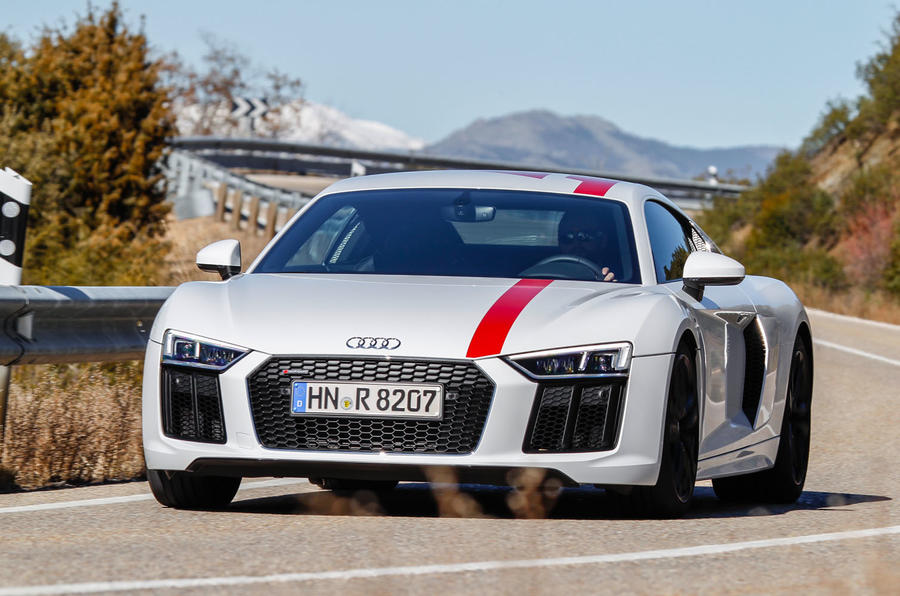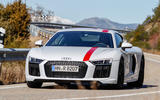What is it?
In the words of Audi, until recently this was the ‘unthinkable’ car.
In fact, after decades and many marketing millions poured into the promotion of ever-dependable quattro four-wheel drive technology, this machine’s mere existence is a form of anarchy within the halls of Ingolstadt.
But not for us or, we suspect, you – because the R8 RWS is now the least expensive but potentially most rewarding version of the marque’s mid-engined supercar. ‘Focused’ and ‘pure’ are the marketing buzzwords here and those are certainly nice to hear from a brand that has for so long grounded itself in luxury and security.
You’ll know of the more hardcore Audi R8 iterations that have sporadically bubbled up in the past – notably the bewinged GT and LMX versions of the first-generation car – but none has promised quite the driver appeal of this RWS model.
The letters stand for ‘rear wheel series’, with the hitherto quattro-driven R8 shorn here of its front driveshafts for a limited production run of 999 cars. This, then, is the first rear-driven series-production model Audi has ever offered.

Both tin-top and Spyder versions will go one sale (at the time of writing this, some build slots remain unspoken for), with the former expected to outsell the latter three to one.
Rather than turning to the big-hitting V10 Plus, the base for the R8 RWS is the less powerful of the two existing Audi R8 models, so it develops 533bhp from the same hell-raising 5.2-litre engine and channels it through a seven-speed S tronic dual-clutch gearbox. There’s no manual option, but this is still a fabulous powertrain of genre-defining character and remains unaltered for this application.
The same cannot be said for the suspension, which is only available in passive guise; magnetic dampers are off the menu. It’s mostly the same hardware you’ll find on the four-wheel-drive car – even down to the wheel sizes – but, because the RWS demonstrated a taste for high-speed oversteer during early tests at the Nürburgring, Audi has made tweaks.
That has meant stiffening the front anti-roll bar and dialling a fraction more negative camber into the rear axle. The dampers themselves are also firmer than on the standard car – that's a surprise, for reasons we’ll come to later.



































Join the debate
Add your comment
As the end of the NA engine
As the end of the NA engine is in sight, I would rather have the V6 turbo or even the warbling 5 in a cheaper model and keep the AWD,thats its advantage for us in Northern winter climes over a GT3 and even a Cayman-and a different beast to a C4S.its slow, though, a Litchfield RS3 would smoke it!
To prefer a V6 turbo over
But if a Litchfield is your thing, you probably would.
eseaton wrote:
Ha, considering you're a nobber, that was funny.
Graceful......!what?
I would have thought that a Car like this would not be described as graceful, it’s a sports car not a Sailing Vessel.....!